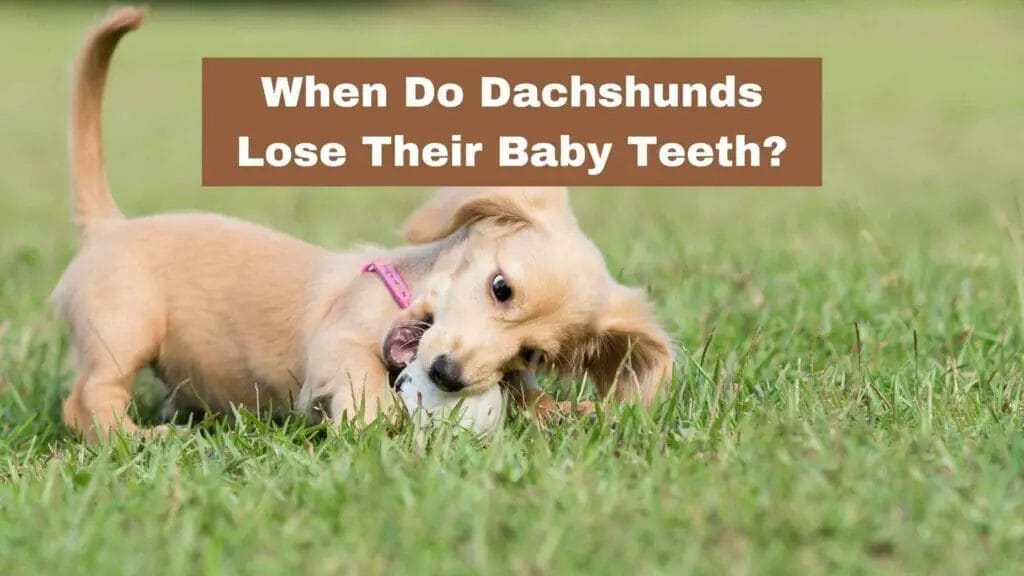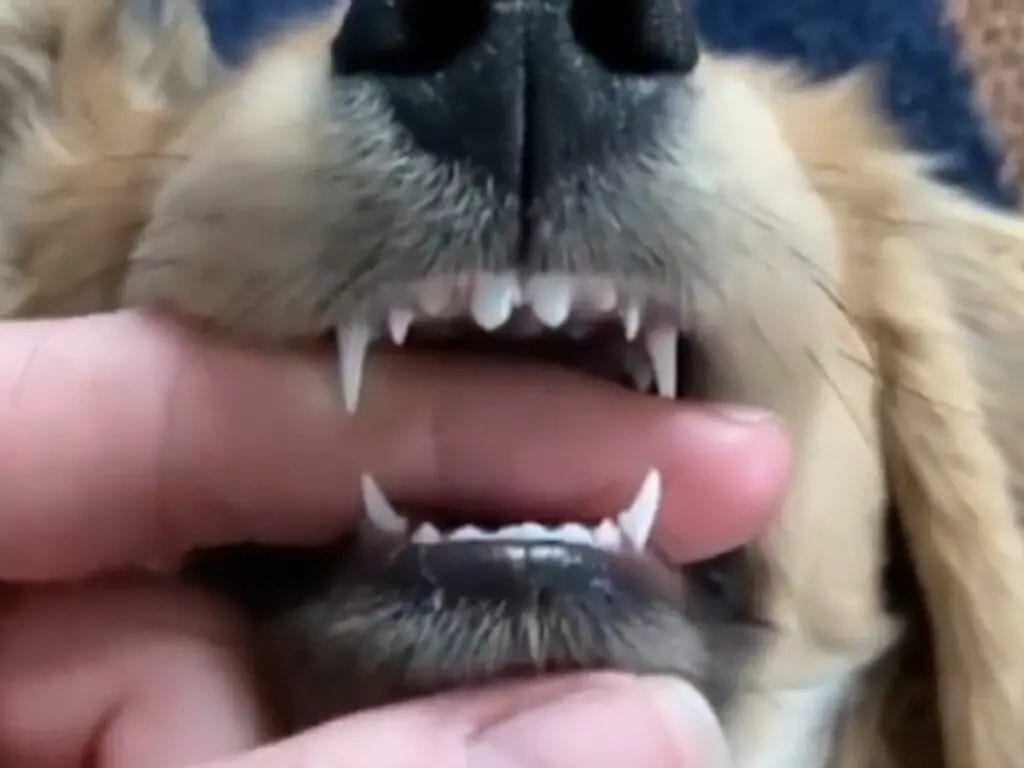
If you’re a proud parent of an adorable Dachshund puppy, you might be wondering when those little baby teeth will make way for strong adult chompers.
Losing baby teeth is a natural process every pup goes through, and understanding the timeline can help ensure your furry friend’s dental health is top-notch. So, when do Dachshunds lose their baby teeth?
In this blog post, we’ll discuss when Dachshunds typically lose their baby teeth and provide valuable insights into the teething process, including signs to look out for and tips on how to care for your teething doxie.
When Do Dachshunds Lose Their Baby Teeth?
Dachshunds usually start losing their baby teeth between 3 and 7 months of age, although the timeline may vary for individual dogs.
Usually Between 3 And 7 Months Of Age
Our little pups usually begin losing their baby teeth between 3 and 7 months of age. Each puppy is unique, so the exact timing may vary depending on factors such as breed type, size, and overall health.
During this period, it’s essential to keep an eye on your pup’s progress as they transition from their baby teeth to adult ones. Between three and five months old, most dachshunds will lose most of their milk teeth.
By six months old, they should have lost all their baby teeth and grown in all their permanent adult chompers.
Varies By Individual Dog
The timeline for losing baby teeth can indeed vary among individual pups. While most Dachshunds start teething around three months of age and finish by eight months, some may begin losing their baby teeth a bit earlier or later than others.
For example, my friend’s Dachshund started teething at just two and a half months old but didn’t complete the process until he was nine months! On the other hand, my sister’s little Dachshund began teething right on schedule around three months but had all her adult teeth in by the time she turned six months old.

Signs Of Teething In Dachshunds
During teething, Dachshunds may exhibit excessive chewing behavior and have swollen or bleeding gums.
Excessive Chewing Behavior
I remember when my sister’s furball started teething and developed an excessive chewing behavior. Around three months of age, she suddenly seemed to have an insatiable desire to chew on anything and everything within reach.
From shoes to furniture legs, no item in the house was safe from those tiny but sharp baby teeth.
During this teething stage, we discovered some helpful tips to better manage her excessive chewing behavior. One key trick was providing plenty of appropriate chew toys for her – these were not only great distractions but also helped soothe her sore gums!
There are various types of toys available on the market, like rubber or rope toys, specifically designed for puppies going through this process; just make sure they’re sized appropriately based on your pup’s size and age.
Swollen Or Bleeding Gums
During the teething process, it’s common for Dachshund puppies to experience swollen or bleeding gums. This is because when their adult teeth start to emerge, they push against the baby teeth, causing irritation and inflammation of the surrounding gum tissue.
The discomfort can cause your puppy to chew excessively on toys or even furniture in an attempt to relieve their pain. It’s essential to monitor your puppy during this time and provide them with appropriate chew toys that can help relieve their soreness and redirect their chewing behavior.
Caring For A Teething Dachshund
During the teething process, it’s important to provide appropriate chew toys and monitor for signs of discomfort or infection, such as swollen or bleeding gums in your Dachshund puppy.
Provide Appropriate Chew Toys
During the teething phase, it’s important to provide your Dachshund with appropriate chew toys. Here are some options:
- Rubber chew toys: These are durable and safe for puppies to gnaw on.
- Rope toys: Great for playing tug-of-war and chewing.
- Frozen toys: Soak a toy in water or broth, then freeze it for a cooling effect on sore gums.
- Dental chews: These can help keep teeth clean and healthy while satisfying your Dachshund’s chewing needs.
Remember to always supervise your puppy when they’re playing with toys to prevent any accidents or choking hazards. Additionally, make sure to regularly inspect their chew toys for signs of wear and tear, as broken pieces can be swallowed and cause harm to your pup’s digestive system.
Monitor For Signs Of Discomfort And Infection
As a responsible pet owner, it’s important to keep a close eye on your teething Dachshund for any signs of discomfort or infection. Some common symptoms include excessive drooling, swollen or bleeding gums, and even refusing to eat or drink.
In some cases, retained baby teeth might cause issues with new adult teeth coming in correctly, leading to dental problems later in life. Additionally, during the teething stage, dogs can be inclined to chew anything they can get their paws on, which leads them susceptible to ingesting toxins that could pose serious health risks.
Conclusion
Dachshunds usually start to lose their baby teeth at around 3 months of age, and the process can last up to 8 months. However, it’s essential to keep in mind that each dog is unique, and some may lose their teeth faster or slower than others.
As pet owners, we must pay attention to signs of teething discomfort and provide appropriate chew toys while monitoring for any potential dental problems.
